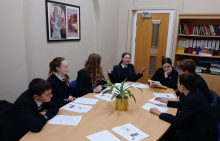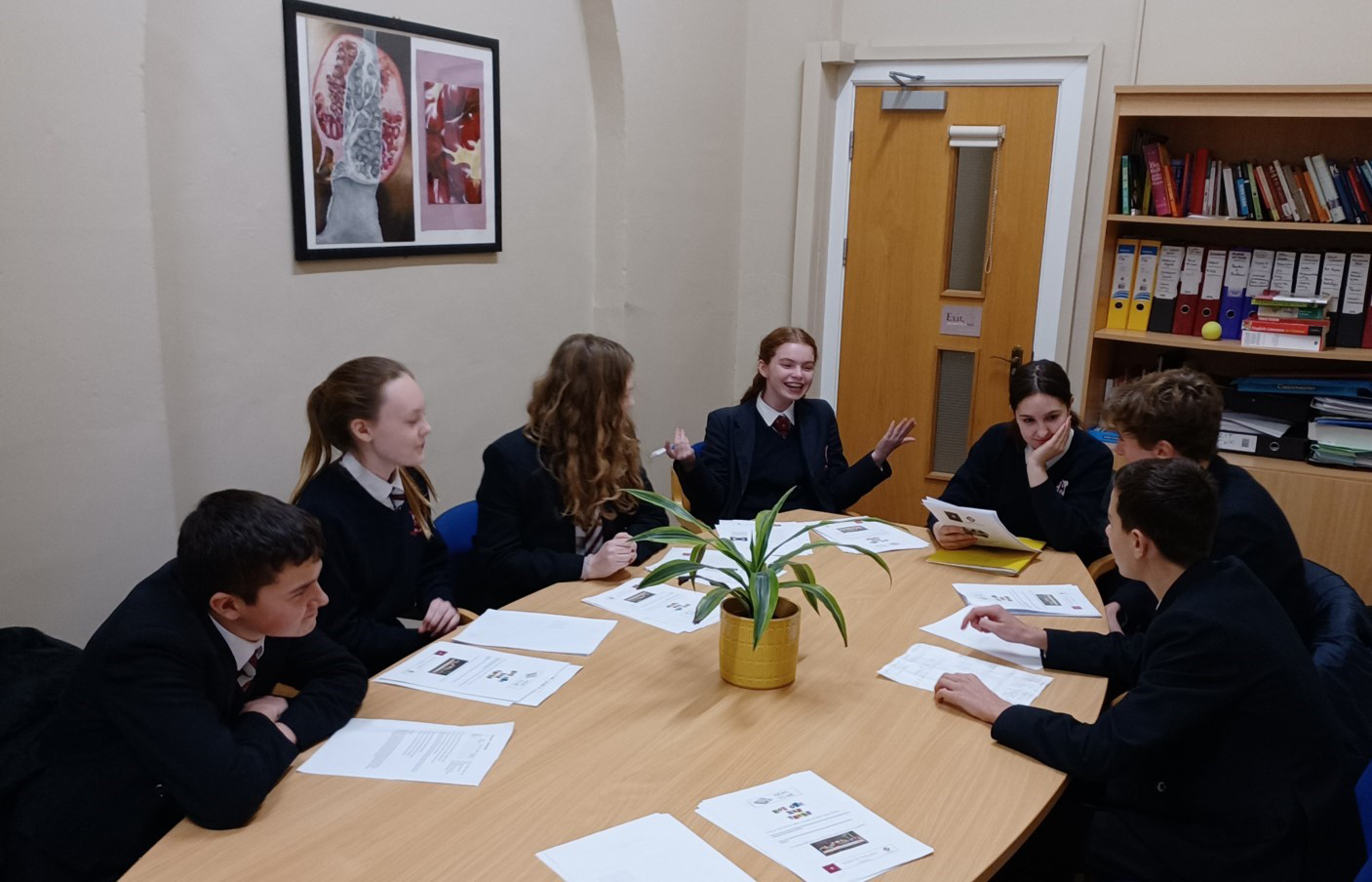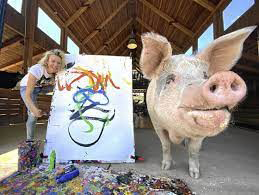
Ars Gratia Artis
Over the last fortnight of term, the first Food for Thought small-group seminars have begun meeting, for interested pupils. They have been fantastic, producing many sparky discussions and debates, with a good dollop of riddles and puzzles on top.

The second stimulus pack will be given to them via the Food for Thought MS Team in the New Year. However, in the meantime I have given the children an intellectual plateful of Christmas Food for Thought - the cognitive equivalent of turkey and cranberry sauce. Why not ask what your family think about this question, over the pudding and brandy sauce?
What is art? What do we mean by 'art'? What distinguishes 'art' from anything else? We’ll all, no doubt, have our own thoughts and ideas about this one, or at least, a sort of mental picture of what we mean by the word.
But one old definition is that 'art' is something we do purely for its own sake - it serves no practical 'purpose': the only reason for creating art is to have created art. The Latin phrase is ‘ars gratia artis’: art for art’s sake. I'm not sure I entirely agree with this definition - and you may not also.
But it's certainly interesting, not least because in that sense it has been claimed that it is 'art' which distinguishes man as a species from the animals.
Some think of 'tools' as being the difference: the stone axe of a prehistoric troglodyte springs at once into the imagination. However, there are lots of examples of animals creating and using tools – e.g. chimps building their own toolkits of sticks and stones, which they use to crack nuts and 'fish' for termites. And you can understand why – tools perform an important function: they help the animals survive, and thus fit quite comprehensibly into the evolutionary process.
Arguably, the actual difference between man and other animals is not tools, but art. Some animals in the wild create and use tools. But they don't, arguably, and as far as we know, create art, although some have been 'trained' to do so by humans: see Pigcasso's painting of Prince Harry:

You could say that there is no reason for animals naturally to create art – no purpose. And that's what defines art.
If we accept this definition (which we might well not), then what about the below as contender for the purest example of art ever created? Something that serves absolutely no purpose whatsoever, except that it could be done. It means nothing; it causes no positive effects, beyond sheer aesthetic joy; it is functionally incomprehensible.
But it's ‘beautiful’, in its way. As I say, I would argue that this is the 'purest' form of art (by the above definition) ever made: not the best, the purest.
I’m looking forward to our Food for Thought team letting me know what they think: is this ‘pure’ art? How could it be even ‘purer’?
Merry Christmas!
NB Under 13s are advised only to access Youtube with adult supervision, so younger ones should watch with a grown-up: and they can ask what you think…
https://www.youtube.com/watch?v=_AxKgUKUpFc
PS If you now need to cleanse your soul after that, sit back in breathe this in instead. Happy Christmas!





